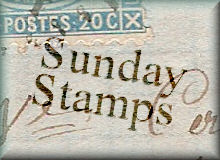
In honor of the Wimbledon tennis tournament (June 25 - July 8) I am posting a postcard with what I think is a tennis racket and ball. It doesn't look like any racket I have seen, but I think the artist intended to represent a tennis racket.
This postcard has an example of a floral object. The object is covered with small flowers. The most common flowers used on cards of this type are roses, violets, and forget-me-nots. Some fine examples of floral object postcards are shown on the postcardiva postcard blog.
I found the back of this postcard quite interesting. First, it appears to be a sample card giving sales information for this and similar postcards: Post Card No. 624, Assorted Designs 12 for 12 cts. Second, the message written by a schoolgirl looks like it could be a school assignment on how to write a postcard. The phrases written are very typical of those seen on many old postcards. The only bit of news is that the writer has a bad cold (which contradicts the beginning statement that she is well).
This postcard has an example of a floral object. The object is covered with small flowers. The most common flowers used on cards of this type are roses, violets, and forget-me-nots. Some fine examples of floral object postcards are shown on the postcardiva postcard blog.
I found the back of this postcard quite interesting. First, it appears to be a sample card giving sales information for this and similar postcards: Post Card No. 624, Assorted Designs 12 for 12 cts. Second, the message written by a schoolgirl looks like it could be a school assignment on how to write a postcard. The phrases written are very typical of those seen on many old postcards. The only bit of news is that the writer has a bad cold (which contradicts the beginning statement that she is well).
Dear schoolmate, I thought I would write and tell you that I am well and hope the same of you. I have a bad cold. Well I guess I will close.
Give my love to all the folks.
With love
From you loving schoolmate
Emma.

Well, dear bloggers, I guess I will close now with a link to a selection of vintage photos celebrating the sport of tennis. The photos are from Life Magazine and were posted as the 2012 Wimbledon championships were about to begin: Love All: Life Plays Tennis.







































